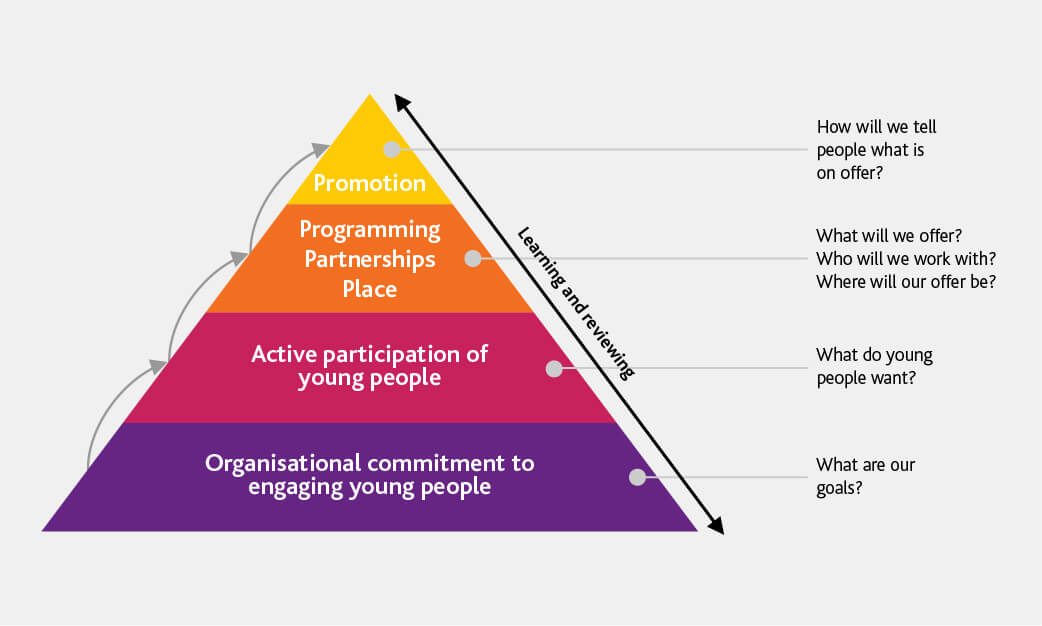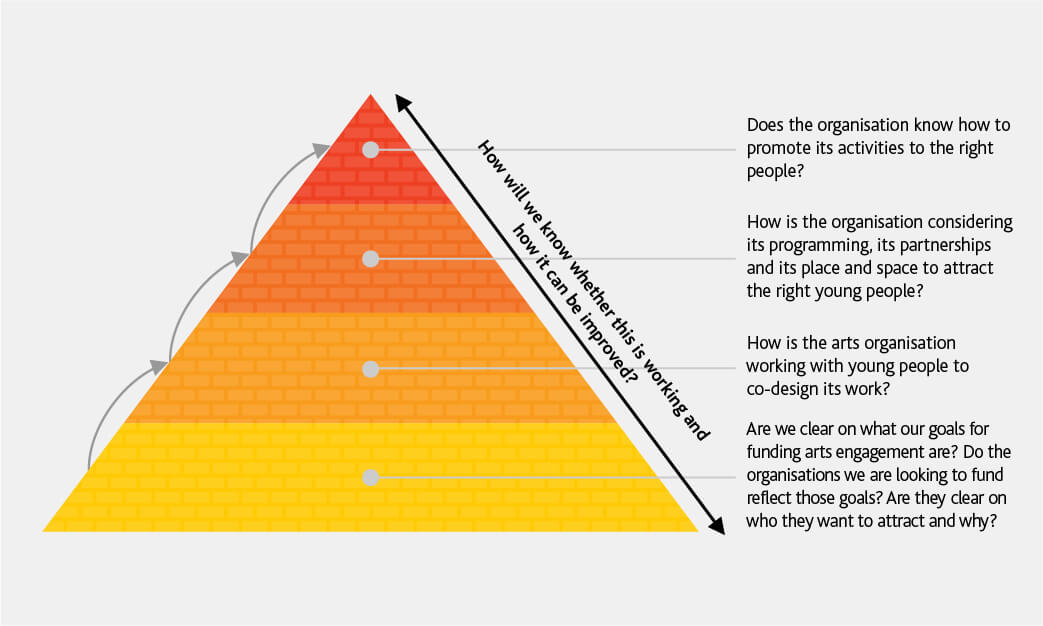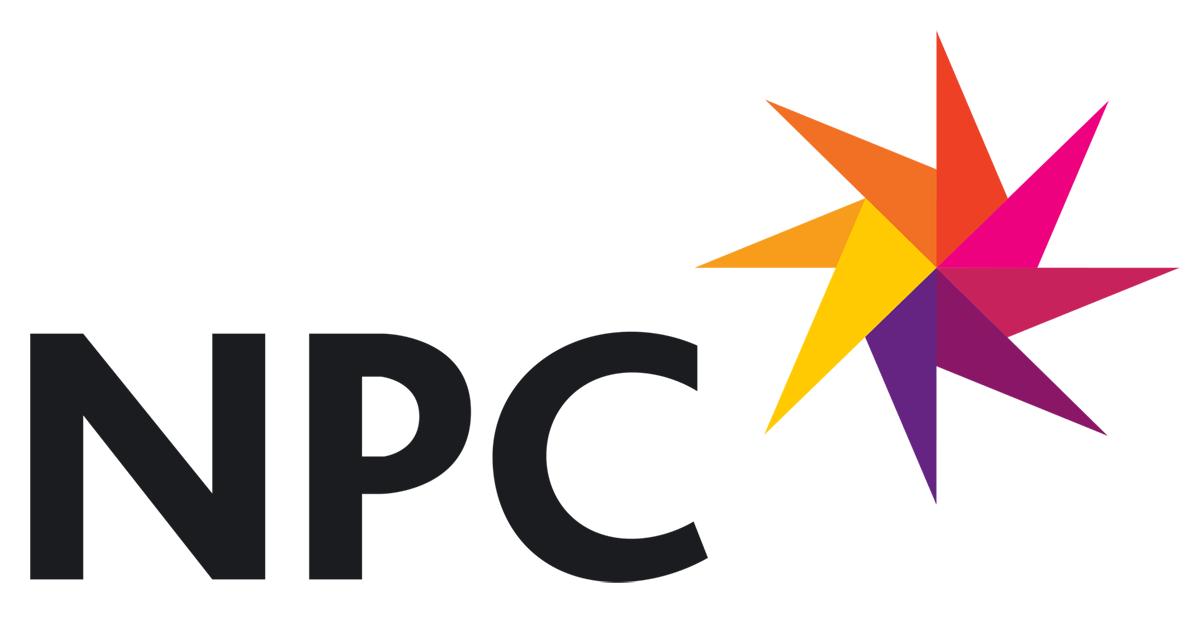This research was conducted by New Philanthropy Capital, a think tank and consultancy for the charity sector. The report is primarily for funders, but we think the advice contained is just as valuable for arts organisations themselves.
Please read their summary report below, for an overview of NPC's key findings and recommendations.
“You know that stereotypical idea of classical music that it’s all opera singing and all these instruments I didn’t even know existed before, I just thought it was not interesting.”Young person
The research was conducted by New Philanthropy Capital in consultation with young people and sector experts from a range of arts charities and funders.
In consultation with young people and sector experts from a range of arts charities and funders, the research examines why it can be difficult for young people to engage with arts organisations and proposes a framework for organisations working to overcome these barriers. The work is based on an extensive literature review, workshops and interviews with arts organisations, and focus groups and interviews with young people.
There are three distinct types of barriers that make it difficult for some young people to get involved or stay involved in arts and culture:
- Attitudinal barriers: A feeling that the arts aren’t for people like you. It doesn’t matter what time the show is or how much the tickets cost. You just feel like you don’t belong.
- Functional barriers: Not being able to take part, regardless of how much you might want to, because the opportunity just isn’t there.
- Practical barriers: Not being able to come along, or not knowing that something was happening because of an inconvenient time or location, prohibitive pricing or a lack of information.
The framework for overcoming these barriers looks at a range of effective approaches that were highlighted by young people, sector experts and existing literature. The most impact comes from bringing the approaches together, to tackle the specific barriers that an organisation has identified.
- The foundation for effective work with young people is organisational commitment and fostering active participation of young people in the organisation and its programmes. Both of these approaches aim to tackle attitudinal barriers and so provide long-term changes, especially with people who are furthest away from engaging in the arts.
- We then turn to three types of decisions organisations need to make at around the same time to overcome functional barriers. These are programming, partnerships, and place. These help organisations attract and welcome the right people, by producing work that is relevant to young people.
- Finally, we investigate how organisations should be thinking about promoting their work to confront practical barriers to attracting young people. This means that young people know more about the opportunities available to them.
- Throughout all of this, organisations and their funders should be using data to learn from what is working and be willing to change what isn’t.

The report suggests several questions that funders can ask when supporting arts and culture organisations.
- Are we clear on what our goals are to fund arts engagement are? Do the organisations we are looking for fund reflect those goals? Are they clear on who they want to attract and why?
- How is the arts organisation working with young people to co-design its work?
- How is the organisation considering its programming, its partnerships and its place and space to attract the right young people?
- Does the organisation know how to promote its activities to the right people?
- How will we know whether this is working and how it can be improved?

“If we don’t widen access, we’ll only tell one story. People from disadvantaged places have important stories to tell, so we have to give them that chance.”Sadler’s Wells
NPC's summary report:
Share this Post


